#st. brigid's cross
Text

Happy feast day, St. Brigid!
#feast day#st. brigid of kildare#catholic#irish#saint#art print#art#catholic art#ducks#baby cow#calf#ireland#green#baby duckies#st. brigid's cross#art sale
31 notes
·
View notes
Text
#st. brigid's day#st. brigid's cross#st. brigid of kildare#spring festival#irish heritage#irish culture#imbolc#february 1st#christian and pagan traditions#celtic traditions
1 note
·
View note
Text
SAINT OF THE DAY (February 1)

On February 1, Catholics in Ireland and elsewhere will honor Saint Brigid of Kildare, a monastic foundress who is – together with Saint Patrick and Saint Columcille – one of the country’s three patron saints.
St. Brigid directly influenced several other future saints of Ireland, and her many religious communities helped to secure the country's conversion from paganism to the Catholic faith.
She is traditionally associated with the Cross of St. Brigid, a form of the cross made from reeds or straw that is placed in homes for blessing and protection.
Some Eastern Catholics and Eastern Orthodox Christians also celebrate her feast.
St. Brigid has been profiled many times by both ancient and modern writers.
However, it is notoriously hard to establish the historical details of her life, and the various accounts make many conflicting claims.
According to one of the more credible biographies of Brigid — Hugh de Blacam's essay in “The Saints of Ireland” — on which the following account is based, most historians place her birth around the year 450, near the end of Saint Patrick's evangelistic mission.
Brigid was born out of wedlock, the daughter of a pagan chieftain named Dubthach and a Christian slave woman named Broicsech.
The chieftain sold the child's pregnant mother to a new master but contracted for Brigid to be returned to him eventually.
According to de Blacam, the child was probably baptized as an infant and raised as a Catholic by her mother.
Thus, she was well-formed in the faith before leaving Broicsech's slave-quarters at around age 10 to live with Dubthach and his wife.
Within the new circumstances of the chieftain's household, Brigid's faith found expression in feats of charity.
From the abundance of her father's food and possessions, she gave generously to the poor.
Dubthach became enraged, threatening to sell Brigid, who was not recognized as a full family member but worked as a household servant to the King of Leinster.
But the Christian king understood Brigid's acts of charity and convinced Dubthach to grant his daughter her freedom.
Released from servitude, Brigid was expected to marry. But she had other plans, which involved serving God in consecrated life.
She even disfigured her own face, marring her beauty in order to dissuade suitors.
Understanding he could not change her mind, Dubthach granted Brigid permission to pursue her plan and material means by which to do so.
Thus did a pagan nobleman, through this gift to his illegitimate daughter, play an unintentional but immense part in God's plan for Ireland.
While consecrated religious life was part of the Irish Church before Brigid's time, it had not yet developed the systematic character seen in other parts of the Christian world by the fifth century.
Among women, vows of celibacy were often lived out in an impromptu manner, in the circumstances of everyday life or with the aid of particular benefactors.
Brigid, with an initial group of seven companions, is credited with organizing communal consecrated religious life for women in Ireland.
Bishop Mel of Ardagh – St. Patrick's nephew, and later “St. Mel” – accepted Brigid's profession as a nun.
According to tradition, the disfigurement she had inflicted on her face disappeared that day, and her beauty returned.
St. Mel went on to serve as a mentor to the group during their time at Ardagh.
Around the time of his death in 488, Brigid's community got an offer to resettle.
Their destination is known today as Kildare (“Church of the Oak”), after the main monastery she founded there.
Brigid's life as a nun was rooted in prayer, but it also involved substantial manual labor: cloth-making, dairy farming, and raising sheep.
In Ireland, as in many other regions of the Christian world, this communal combination of work and prayer attracted vast numbers of people during the sixth century.
Kildare, however, was unique as the only known Irish “double monastery” — it included a separately-housed men's community, led by the bishop Saint Conleth.
From this main monastery, Brigid's movement branched out to encompass a large portion of Ireland.
It is not clear just how large, but it is evident that Brigid traveled widely throughout the island, founding new houses and building up a uniquely Irish form of monasticism.
When she was not traveling, many pilgrims – including prominent clergy and some future saints – made their way to Kildare, seeking the advice of the abbess.
Under Brigid's leadership, Kildare played a major role in the successful Christianization of Ireland.
The abbess' influence was felt in the subsequent era of the Irish Church, a time when the country became known for its many monasteries and their intellectual achievements.
St. Brigid of Kildare died around 525.
She is said to have received the last sacraments from a priest, Saint Ninnidh, whose vocation she had encouraged.
Veneration of Brigid grew in the centuries after her death and spread outside of Ireland through the work of the country's monastic missionaries.
12 notes
·
View notes
Text
ST BRIGID’S CROSS
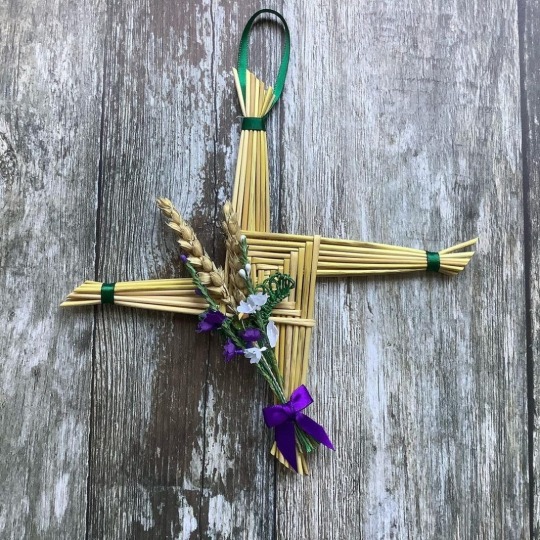
St Brigid, also known as “Mary of the Gael,” is an abbess and patroness of Ireland. She is furthermore the founder of the first Irish monastery in County Kildare, Ireland. Born in Dundalk in 450 AD, St Brigid is accredited with first creating the unique cross which bears her name.
The distinctive St Brigid’s Cross design, made from woven rushes, is thought to keep evil, fire, disease and hunger from the homes in which it is displayed. The tale of its origin as we know it is as follows....
There was an old pagan Chieftain who lay delirious on his deathbed in Kildare (some believe this was her father) and his servants summoned Brigid to his beside in the hope that the saintly woman may calm his restless spirit. Brigid is said to have sat by his bed, consoling and calming him and it is here that she picked up the rushes from the floor and began weaving them into the distinctive cross pattern. Whilst she weaved, she explained the meaning of the cross to the sick Chieftain and it is thought her calming words brought peace to his soul. He was so enamoured by her words that the old Chieftain requested he be baptized as a Christian just before his passing.

Since that day, and for the centuries that followed, it has been customary on the eve of her Feast Day (February 1st) for the Irish people to fashion a St Brigid's Cross of straw or rushes and place it inside the house over the door.
This rush cross, which became St Brigid’s emblem, has been used in Irish designs throughout history, with many modern stylists using this now popular Irish symbol within the designs of Irish jewelry and Irish gifts.
This cross is normally hand created from rushes however occasionally straw is also used. The rushes were collected from wetlands and cut into pieces, 8-12 inches long. Rushes can be hard to get for city dwellers so ordinary drinking straws are a good substitute. Use rubber bands to tie up the ends.
HOW TO MAKE ST BRIGID’S CROSS

You Will Need
16 Reeds (or Straws)
4 small rubber bands
Scissors
What to Do
Hold one of the reeds vertically. Fold a second reed in half as in the diagram.
Place the first vertical reed in the centre of the folded second reed.
Hold the centre overlap tightly between thumb and forefinger.
Turn the two rushes held together 90 degrees anti-clockwise so that the open ends of the second reed are pointing vertically upwards.
Fold a third reed in half and over both parts of the second reed to lie horizontally from left to right against the first straw. Hold tight.
Holding the centre tightly, turn the three reeds 90 degrees anti-clockwise so that the open ends of the third reed are pointing upwards.
Fold a new reed in half over and across all the rushes pointing upwards.
Repeat the process of rotating all the rushes 90 degrees anti-clockwise, adding a new folded reed each time until all rushes have been used up to make the cross.
Secure the arms of the cross with elastic bands. Trim the ends to make them all the same length. The St Brigid’s Cross is now ready to hang.

#st brigid#ireland#history#irish#irish culture#stbrigid#st brigid’s cross#st brigids cross#febuary#st Brigid’s day#st brigids day#Mary of the gael#ward
51 notes
·
View notes
Text
st brigid my no.1 favourite saint. gouged out her own eye so she wouldnt have to marry a man and then used a magic cloak to scam a king out of land. the original girlboss
#and performed abortions#also brigids crosses are fun to make#and i get two days off school bc of her <3#st brigid#mo rudaí
3 notes
·
View notes
Text
Blooms on St Brigid's Day
It has been a bright and sunny day here which, according to certain folk tales, means the Cailleach intends for the winter to be a long one and has merely parted the clouds in order that she may more easily see to gather enough firewood to get her comfortably through the next harsh months. I am hoping she was distracted by the bird song and beauty of the freshly blooming snowdrops, irises and…

View On WordPress
3 notes
·
View notes
Text

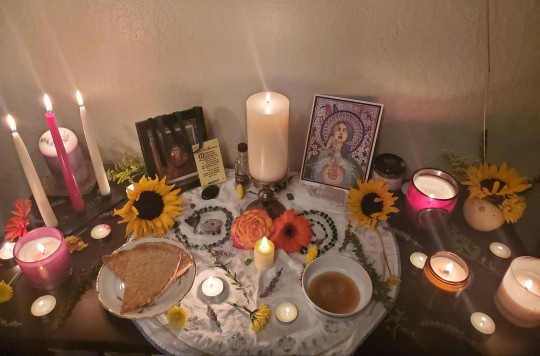
My altar for Imbolc and my crosses! My partner made the second one, and I'm always very happy that he participates in my holidays with me 😊 I made some Bannock to leave as an offering, and for my own dinner I made colcannon from Irish Traditional Cooking by Darina Allen. Highly recommend checking it out if you've ever wanted to try your own hand at Irish cuisine! May Brigid's light touch all who celebrate this wonderful holiday, and may your spring be filled with peace.
5 notes
·
View notes
Text
careers that have you teaching the beautiful art of weaving to children…….
3 notes
·
View notes
Text
does one need to "believe" in traditions or superstitions? is it not enough to simply think they're neat?
#I want to hang a st. brigid's cross over our doorway#just because I think it's a neat tradition#not necessarily because I believe in its power to protect against fire or evil spirits
9 notes
·
View notes
Text
Losers' Bracket Round 2 Announcement
After two ties in round 1, we're ready for round 2!

St Sebastian vs St Jadwiga of Poland
St Martha vs St Barbara
St Mary Magdalene vs St Kateri Tekakwitha
St Agatha vs St Clare of Assisi
St Brigid of Ireland vs St Teresa of Avila
St George vs St John of the Cross
St Cecilia vs St Hildegard of Bingen
St Dymphna vs St Francis of Assisi
St Oscar Romero vs St Augustine of Hippo
St Catherine of Alexandria vs St Martin de Porres
St Guinefort vs St Olga of Kiev
St Joseph vs St Catherine of Siena
St Jude the Apostle vs St Rose of Lima
St Elizabeth vs St Thomas Aquinas
St Charles Lwanga vs St Ignatius of Loyola
St Michael the Archangel vs St Anthony of Padua
#st sebastian#st jadwiga#st hedwig#st martha#st barbara#st mary magdalene#st kateri tekakwitha#st agatha#st clare of assisi#st brigid of ireland#st teresa of avila#st george#st john of the cross#st cecilia#st hildegard of bingen#st dymphna#st francis of assisi#st oscar romero#st augustine#st catherine of alexandria#st martin de porres#st guinefort#st olga of kiev#st joseph#st catherine of siena#st jude#st rose of lima#st elizabeth#st thomas aquinas#st charles lwanga
4 notes
·
View notes
Text
Made these today!!

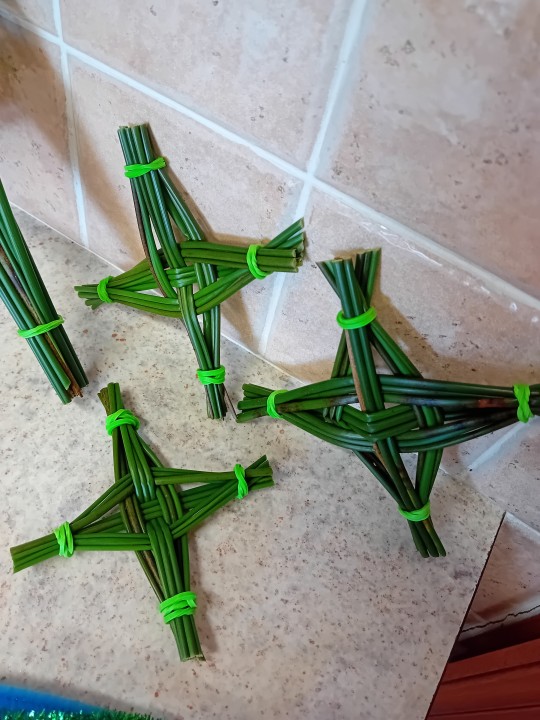
2 notes
·
View notes
Text
im like six days late but its so crazy how st brigid is 1500 years old now. she’s so old! and i love her. entranced by the beauty of the world…
#like wow!! what a milestone queen#didnt do anything this st brigids which is a shame because out of all the years….#i need to get back into making crosses i used to love making crosses :(
1 note
·
View note
Text

On February 1, Catholics in Ireland and elsewhere will honor Saint Brigid of Kildare, a monastic foundress who is – together with Saint Patrick and Saint Columcille – one of the country’s three patron saints.
St. Brigid directly influenced several other future saints of Ireland, and her many religious communities helped to secure the country's conversion from paganism to the Catholic faith.
She is traditionally associated with the Cross of St. Brigid, a form of the cross made from reeds or straw that is placed in homes for blessing and protection.
Some Eastern Catholics and Eastern Orthodox Christians also celebrate her feast.
St. Brigid has been profiled many times by both ancient and modern writers, but it is notoriously hard to establish the historical details of her life, and the various accounts make many conflicting claims.
According to one of the more credible biographies of Brigid, Hugh de Blacam's essay in “The Saints of Ireland,” on which the following account is based – most historians place her birth around the year 450, near the end of Saint Patrick's evangelistic mission.
Brigid was born out of wedlock, the daughter of a pagan chieftain named Dubthach and a Christian slave woman named Broicsech.
The chieftain sold the child's pregnant mother to a new master but contracted for Brigid to be returned to him eventually.
According to de Blacam, the child was probably baptized as an infant and raised as a Catholic by her mother.
Thus, she was well-formed in the faith before leaving Broicsech's slave-quarters, at around age 10, to live with Dubthach and his wife.
Within the new circumstances of the chieftain's household, Brigid's faith found expression in feats of charity.
From the abundance of her father's food and possessions, she gave generously to the poor.
Dubthach became enraged, threatening to sell Brigid – who was not recognized as a full family member but worked as a household servant – to the King of Leinster.
But the Christian king understood Brigid's acts of charity and convinced Dubthach to grant his daughter her freedom.
Released from servitude, Brigid was expected to marry. But she had other plans, which involved serving God in consecrated life.
She even disfigured her own face, marring her beauty in order to dissuade suitors.
Understanding he could not change her mind, Dubthach granted Brigid permission to pursue her plan and material means by which to do so.
Thus did a pagan nobleman, through this gift to his illegitimate daughter, play an unintentional but immense part in God's plan for Ireland.
While consecrated religious life was part of the Irish Church before Brigid's time, it had not yet developed the systematic character seen in other parts of the Christian world by the fifth century.
Among women, vows of celibacy were often lived out in an impromptu manner, in the circumstances of everyday life or with the aid of particular benefactors.
Brigid, with an initial group of seven companions, is credited with organizing communal consecrated religious life for women in Ireland.
Bishop Mel of Ardagh – St. Patrick's nephew and later “St. Mel” – accepted Brigid's profession as a nun.
According to tradition, the disfigurement she had inflicted on her face disappeared that day and her beauty returned.
St. Mel went on to serve as a mentor to the group during their time at Ardagh.
Around the time of his death in 488, Brigid's community got an offer to resettle. Their destination is known today as Kildare (“Church of the Oak”), after the main monastery she founded there.
Brigid's life as a nun was rooted in prayer, but it also involved substantial manual labor: cloth-making, dairy farming, and raising sheep.
In Ireland, as in many other regions of the Christian world, this communal combination of work and prayer attracted vast numbers of people during the sixth century.
Kildare, however, was unique as the only known Irish “double monastery”: it included a separately-housed men's community led by the bishop Saint Conleth.
From this main monastery, Brigid's movement branched out to encompass a large portion of Ireland.
It is not clear just how large, but it is evident that Brigid traveled widely throughout the island, founding new houses and building up a uniquely Irish form of monasticism.
When she was not traveling, many pilgrims – including prominent clergy and some future saints – made their way to Kildare, seeking the advice of the abbess.
Under Brigid's leadership, Kildare played a major role in the successful Christianization of Ireland.
The abbess' influence was felt in the subsequent era of the Irish Church, a time when the country became known for its many monasteries and their intellectual achievements.
St. Brigid of Kildare died around 525.
She is said to have received the last sacraments from a priest, Saint Ninnidh, whose vocation she had encouraged.
Veneration of Brigid grew in the centuries after her death and spread outside of Ireland through the work of the country's monastic missionaries.
8 notes
·
View notes
Text


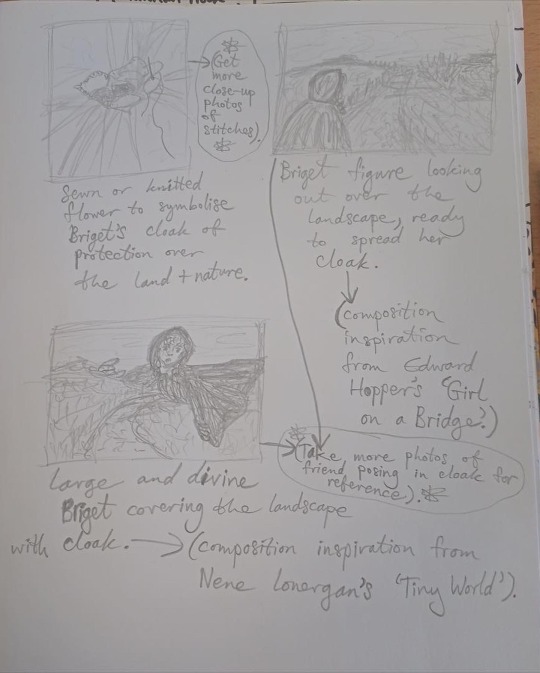





#art #artist #design #procreate #ipad #drawing #sketch #learning #practice #digital #digitalart #portrait #progress #craft #stbrigid #brigit #briget #stbriget #brigid #stbrigidsday #stbrigidscross #cloak #myth #mythology #folklore #folktale #religion #irish #nature #goddess
#artwork#digital art#drawing#art#artist#procreate#sketch#learning#practice#doodles#st bridget#st brigid#st briget#cross#st Bridget’s day#st Bridget’s cross#cloak#nature#craft#goddess#myth#mythology#folklore#folktale#religion#irish history#irish mythology#Ireland
1 note
·
View note
Text
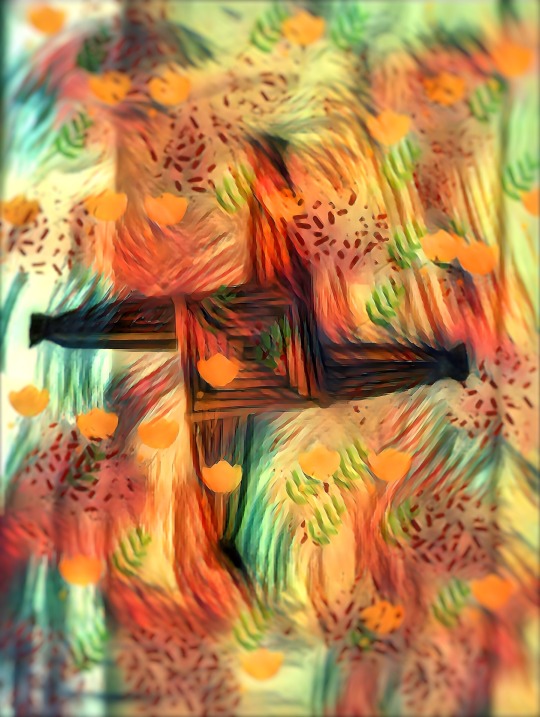
0 notes
Text

All About Imbolc
Imbolc, also known as Imbolg, celebrated on February 1st, marks the halfway point between the winter solstice and the spring equinox in early Ireland and Scotland, and also signified the beginning of the first signs of spring after all the harsh winter days. Originally a pagan holdiay in pre-Christian times, there is little in writing about the historic traditions and customs, although many historians believe it revolved around the Celtic Goddess Brigid, lambing season, and cleansing due to observed ancient poetry.
Brigid is a Goddess and daughter of the father-God of Ireland, Dagda. She is associated with quite a few things depending on the sources, but universally associated with wisdom and poetry. Other associations of hers are blacksmithing, protection, domesticated animals, childbirth, fire, and healing. She was also known as a protector of the home and the family.
Once Christianity arose, it is believed that the Goddess was syncretized with the Irish Saint Brigid by Christian monks due to the many overlapping associations. This caused Imbolc to quickly turn into St. Brigids Day and the next day into Candlemas with the rising Christian popularity, enmeshing the holiday associations together.
Today, many people have mixed the traditions and melded many associations from both religious and cultural history to celebrate their own unique way. Common ways to celebrate are making a Brigid's Cross, welcoming Brigid into the home, having a feast in her honor, cleaning the home and oneself, visiting a holy well, and in some parts of the world they still hold festivals and processions carrying a representation of Brigid. Many pagans nowadays are using associations of hers and their connection with nature to create their own ways to celebrate, however, and you can absolutely celebrate however you feel called to do so.
Imbolc Associations:
Colors - white, gold or yellow, green, and blue
Food - milk, butter, cheese, seeds and grains, breads, herbs, blackberries, oat porridge, wild onion and garlic, honey
Animals - sheep and lambs, swans, cows, burrowing and hibernating animals
Items - candles, corn dolls, Brigid's cross, fires, snowdrops and white flowers, crocuses and daffodils, flower crowns
Crystals - amethyst, garnet, ruby, quartz, bloodstone
Other - lactation, birth, feasting, farm preparation, cleansing and cleaning, the sun, poetry and creative endevours, smithing, water
Ways To Celebrate Imbolc:
make a Brigid's cross
light candles
have a feast
bake bread
plan your spring garden
leave an offering for Brigid
make a corn doll
craft a flower crown
clean your home
take a cleansing bath
make something out of metal
have a bonfire
look for the first signs of spring
make your own butter or cheese
do divination work and seek wisdom
write a poem
#magical#magic#magick#witch#witchy#pagan#paganism#witchblr#imbolc#imbolg#brigid#st brigid#candlemas#holiday#baby witch#witch tips#sabbat#wheel of the year#wiccan#celtic#gaelic#history#brigit#beginner witch#witchcraft#witchcore#cottage witch#hedge witch#green witch#eclectic witch
395 notes
·
View notes